There are a lot of potting soils and soil amendments on the market. To make sure your plants are in an environment that helps them grow and thrive, you need to choose the right potting soil for each. Read on to learn more about the main types of soil and how to use them.
What does potting soil do?
Potting soil is made up primarily of organic matter such as sphagnum peat moss and mineral matter such as sand. It’s a growing medium that allows plants to take root, grow strong and flourish. Plants rely on soil to get the nutrients they need to grow and produce healthy foliage and abundant flowers.
Let’s get into what kind of potting soil you should choose for your houseplants.
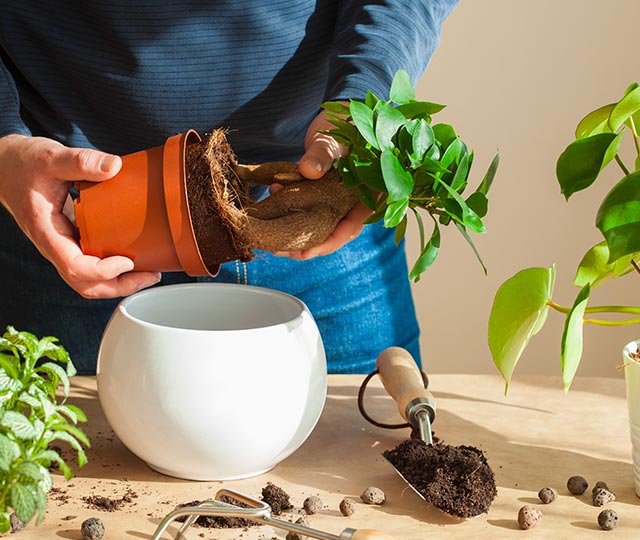

All-purpose potting soil
All-purpose potting soil is a versatile mix that can be used for both indoor and outdoor plants.
The lightweight formula allows air to circulate more easily around the roots, which stops them from rotting. Some mixes on the market contain slow-release fertilizers to provide plants with nutrients over several months, while others contain mycorrhizae to promote better root development. Because of its light composition, water drains more quickly, which keeps your houseplant’s roots from rotting.
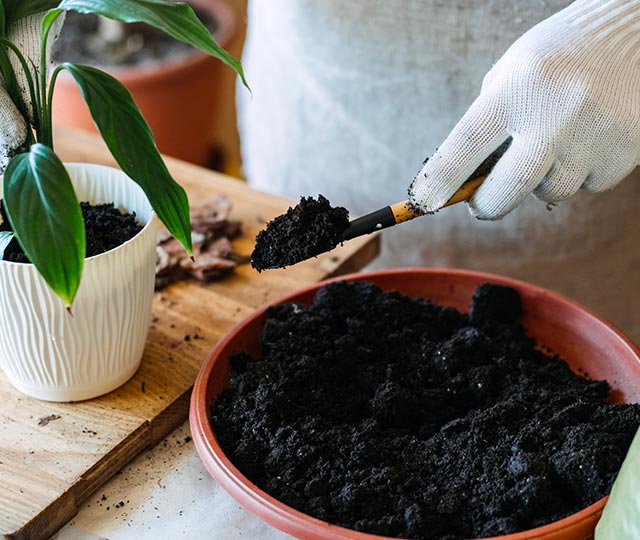

Cactus and succulent potting soil
For your succulents and cacti, we suggest using potting soil specifically designed to replicate the dry conditions of slow-growing plants that don’t require frequent watering.
Cactus and succulent potting soil is made from a blend of sphagnum peat moss, sand and perlite. These components ensure good porosity and rapid water drainage, while maintaining the moisture levels that these types of plants need.
- Sphagnum peat moss adds nutrient‑dense organic matter to the soil and improves water retention
- Sand improves drainage and prevents soil compaction
- Perlite prevents soil compaction and promotes root development
This type of potting soil dries quickly, which prevents your plant’s roots from rotting. Some cactus and succulent soils also contain slow-release fertilizers.
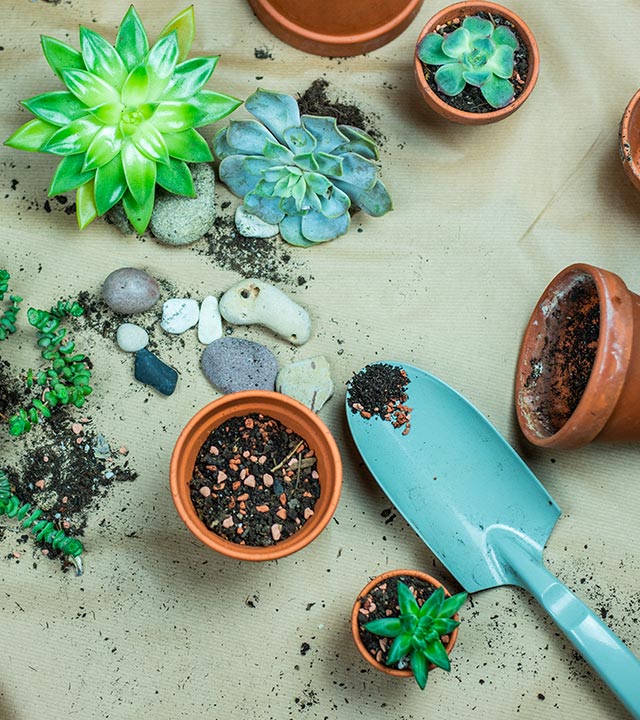
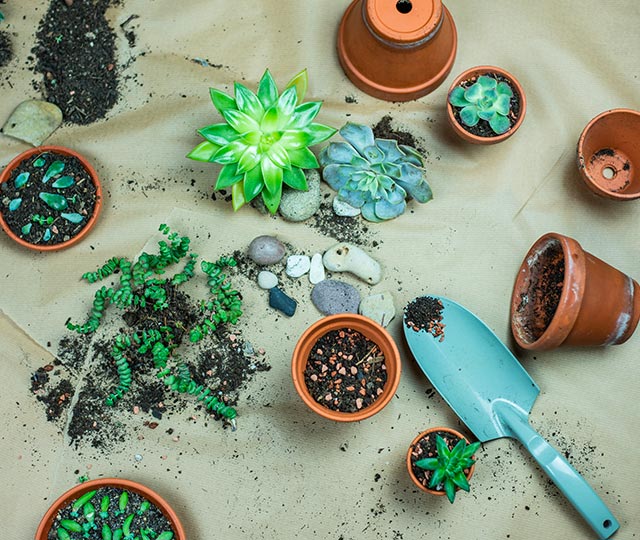
Orchid potting soil
Orchids require a special bark-based potting soil for maximum aeration. This type of soil prevents soil compaction and stimulates plant growth. It also provides optimal drainage while maintaining the right moisture levels for these types of plants.
Seed-starting potting soil
Seeding mix is specially formulated to help seeds germinate and multiply. This lightweight product makes it easy to fill seed trays, while providing excellent aeration and water drainage. It maintains the right levels of moisture for root development and gives a solid base for your plants.
This soil can be enriched with slow-release fertilizers as the seed grows to provide it with all the nutrients it needs to thrive.
To learn more on how to grow seedlings indoors, read our full article.
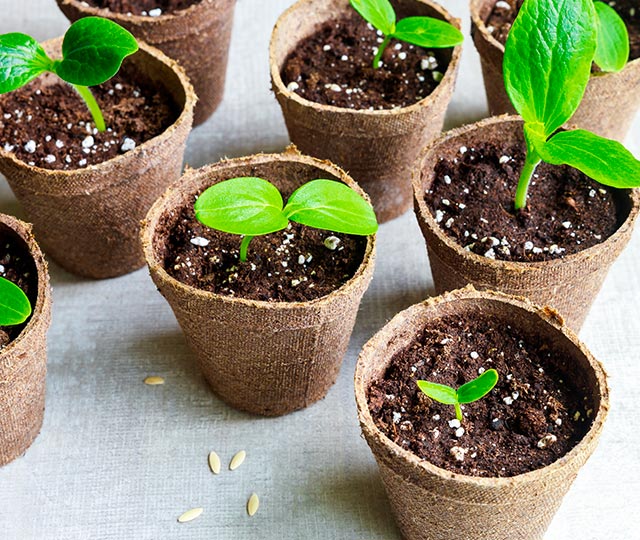

Plus, two potting-soil supplements
Vermiculite
Vermiculite is a lightweight aggregate produced heating clay particles to very high temperatures. When mixed with potting soil, it improves aeration and drainage, resulting in better root development. It also helps maintain soil moisture, which means less frequent watering.
It’s mainly used for germination and to root cuttings.
Perlite
Perlite is a lightweight aggregate made from the extreme heating of volcanic rock. It can hold up to four or five times its weight in water. When added to potting soil, perlite helps maintain soil moisture while promoting drainage and aeration. It can be used for both indoor and outdoor plants.
Perlite is ideal for germination and cuttings. It can be packed tightly around cuttings, which supports the plant until the roots form.
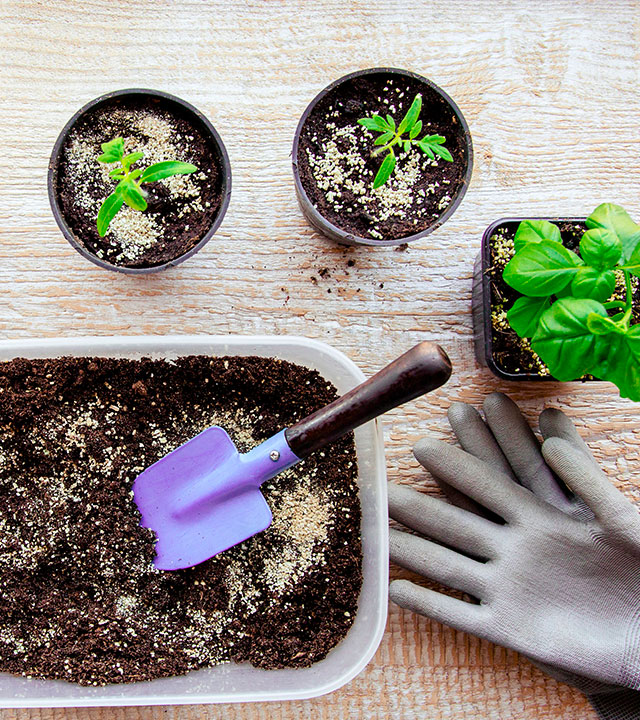
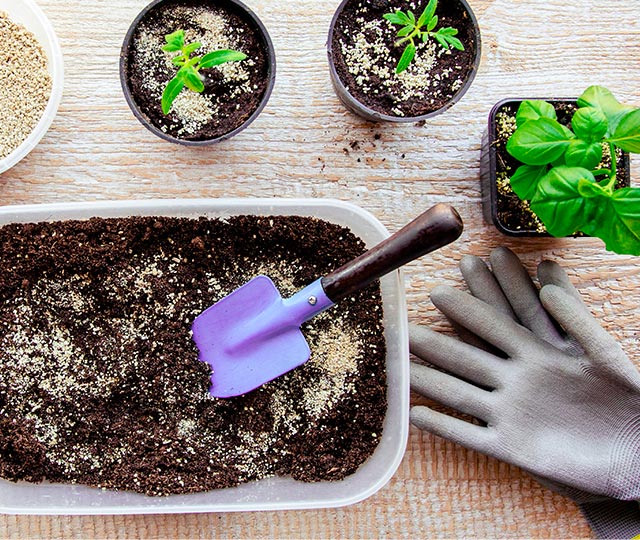
Need more gardening tips? Visit your nearest BMR store to speak with our experts.
Shop by category
D'autres articles qui pourraient vous intéresser
Les renseignements de cet article sont présentés à titre informatif seulement et peuvent ne pas être applicables dans certaines situations ou facteurs particuliers. En cas de doute, adressez-vous à un expert en horticulture du BMR de votre région.